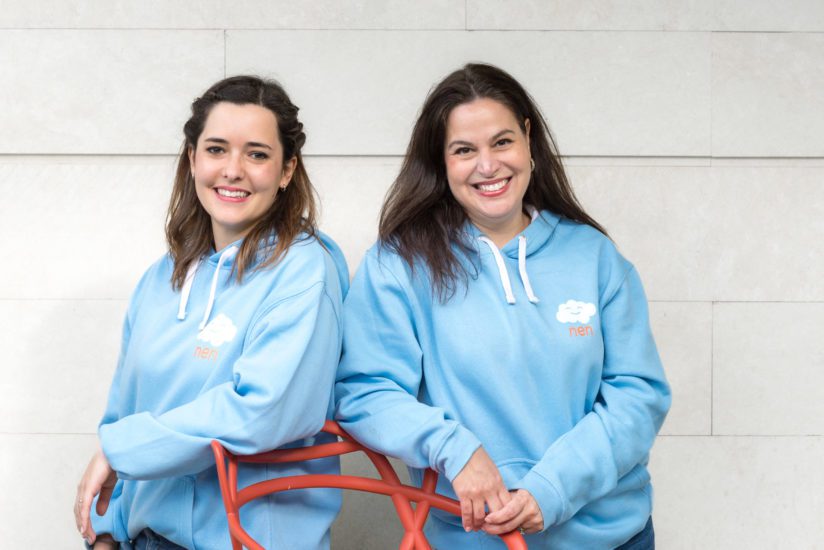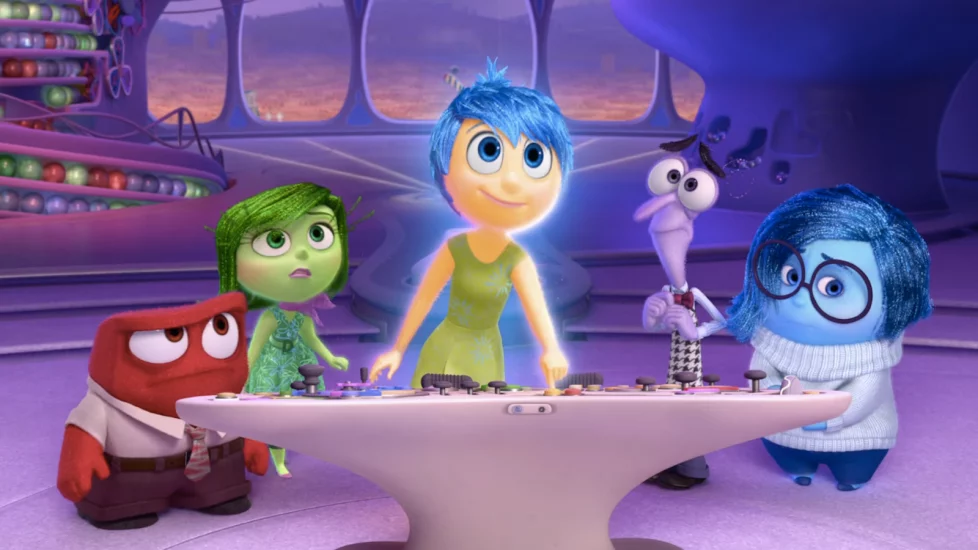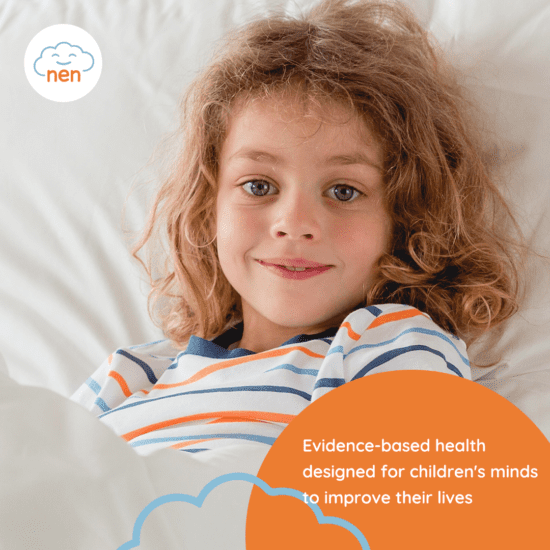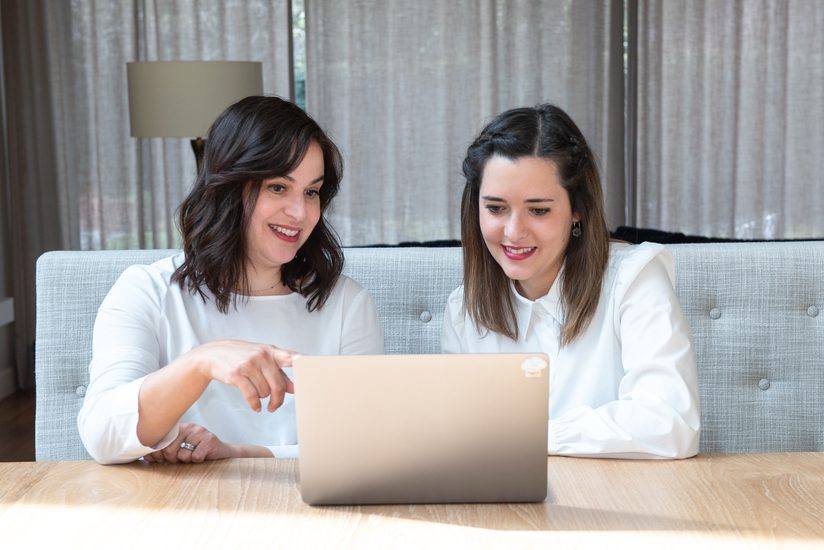
Article
Top 10 SaMD Job Boards & Regional Organizations
This is Part 2 of the two-part interview between Orthogonal’s Randy Horton and Francesca Wuttke and Xenia Riasol of nen.
Links to individual parts of the interview:
When Francesca Wuttke struck out to develop a groundbreaking and viable Digital Therapeutic (DTx) solution to address an underserved population, she could think of no better partner than Xenia Riasol. The former coworkers bring their long-time healthcare, startup acceleration and Digital Therapeutic expertise to nen, a novel digital solution that uses Cognitive Behavioral Therapy (CBT) to help children with cancer manage their pediatric oncology pain.
Randy Horton, Orthogonal’s VP of Partnerships, sat down with Francesca and Xenia to discuss all things nen. Between landing interest and funding for their early stage startup, to gathering clinical experts to advise the creation of their DTx, Francesca and Xenia paint a picture of nen’s potential to transform the lives of kids with cancer.
In Part 2 of this interview, Francesca and Xenia detail the current state of pediatric oncology pain treatment, what makes nen a truly valuable solution for patients, healthcare providers and payers alike and reflect on lessons learned from being both entrepreneurs and investors.

Randy:
Can you tell us a little bit about pain and pediatric oncology? Where’s the science right now? To what extent are you just automating treatment that exists? To what extent are you inventing, testing or proving out new science? What could the before and after look like for a kid?
Francesca:
I was surprised to hear that in oncology, nearly 100% of these kids will experience pain, which is awful and heartbreaking. Small children struggle to interpret the current pain assessment tools and scales, and healthcare providers find it difficult to assess and evaluate the child’s pain progression. So the clinicians treat it assuming pain.
In cancer, there are generally two flavors of pain. There’s procedural pain – like surgical pain from getting a line put in – and then there’s the pain of the disease itself. Regardless of the cause, they’re treated similarly. And for kids, that means either giving them Tylenol/paracetamol or giving them opioids. In rare cases with nerve involvement they might get something Gabapentin-like, but usually it’s Tylenol or opioids.
Randy:
That’s a big gap.
Francesca:
It’s a really big gap. You want to treat pain without sedating the child to maintain their quality of life. But there’s a huge anxiety component in the interpretation of pain as well. What we’re looking to do, regardless of where the kid falls in terms of the pain spectrum, is help them manage their pain using the plasticity within their brain, guided by Cognitive Behavioral Therapy (CBT). CBT is about forming habits. It allows kids to be trained on how to manage their pain every time it comes around, even if it’s different than it was last time.
In terms of how we’re going to be applying the CBT to our platform’s game: CBT for pain exists, as well as for anxiety and depression. We’re going to be using a set of questions or “script”, incorporated into the game in a way that’s seamless for the kids, so they don’t realize they’re getting CBT. We’ve visualized the following from discussions with the clinical team, as well as some gamification experts: The kids play a game. Then there’s a commercial break, just like when you’re watching YouTube. That’s when our characters will come in and ask specific questions.
We’ll have three characters. Dolores is going to be asking the kids questions about pain and delivering CBT based on the dopaminergic receptors for pain. Sara and Tony – “sara-tony” – are obviously based on the serotonin receptors. Sarah is more focused on anxiety and Tony is more focused on depression.
One of the biggest difficulties with children, particularly preschool children, is that they can’t separate pain from mood. If you have very specific avatars that are asking similar lines of questions or talking about similar things, then children start separating the three in their minds. The clinical board really liked the idea of using three different characters. Kids can very much relate to a specific character. They won’t be having a verbal conversation with them, but they’ll recognize that Dolores is asking me about pain, and Sarah’s asking me about anxiety. They’ll start, through pattern recognition, putting these clusters into buckets, if you will. Over time, they’ll expect the questions and will know how to answer them.
Randy:
I have a pop culture analogy for everything, but this makes me think of the Pixar movie Inside Out, of the different characters inside the kid’s head who express different emotions. You’re calling on certain characters to stimulate them in that way.

Francesca:
Yeah, exactly. And then, over time, they’ll relate to those characters. The goal is when the child is stabilized based on their pain, but also anxiety and depression, then they’ll all appear together. That’s part of the rewards-based therapy.
Randy:
Clearly, you have a global business orientation. I’m guessing you’re not just thinking about one market. Do you know how this idea translates culturally? Will you have to change the characters’ names or appearances?
Xenia:
For the three characters, we will make them as diverse as we can so that they are transversal regardless of gender and culture. It is very probable that they won’t be human-shaped; that way we won’t need to adapt their appearance. But it’s not just a matter of how kids across the world relate to these characters, but also how they express and live with pain. Our Clinical Advisory Board explained that, depending on the culture, kids express pain very differently. For example, and generally speaking, kids from South America tend to be more open with their feelings, while kids from some Asian countries are super self-conscious. They tend to be reserved and don’t express things the same way.
We know that this is something that we’ll have to study. We are going to try to do things transversally to as large an extent as possible, because we know that kids don’t express themselves the same way everywhere. Even for kids in the same country, they might use different words to express pain. So we will try to make the game as visual as possible, and try not enter into these cultural differences. We know that is something that we will work very hard on, especially for the different age ranges. For very small kids, they might not be conscious of it, but when they get older, they will need something more complex to really amuse themselves.
Randy:
How did you find your artist? How did you know you had the right person for the business?
Francesca:
We’ve found him thanks (again) to our network and contacts. We’ve just started to collaborate with an experienced storyboard artist that has an impressive illustration portfolio and knowledge of the field of animation. We believe that we’re close to bringing Sara, Dolores and Tony to life.

Randy:
How do you research and design for kids? It’s a very different audience. Do you use “very clinical” words like “owie?”
Francesca:
Actually, one of the original thoughts we had was using voice recognition to capture some of the pain that the child is feeling. We know a two-year old isn’t super verbal. The parents interpret for or translate for the child because outside of the family, it’s very difficult to understand them. But if it’s difficult for us to understand, imagine what it’s like for poor Siri or Alexa. They are also cultural ways of describing pain that vary from family to family. You can have an “ouchie” or you can have a “boo boo.” Getting a catalog of all those words would be really tricky.
In the game, there’ll be a tutorial that will be spoken because these young kids are not yet literate. The CBT modules will have to be adapted for this age group, as they already have been for culture and language.
Randy:
Have you seen other Digital Therapeutics in any clinical domain targeting the issue of communicating with such a young audience?
Francesca:
There’s Akili that treats ADHD, but it’s for kids who are a little bit older, say, seven. There are a few OPCA[1] approaches for kids, but again, nothing in the two to seven year old range and nothing for pain. Then there are a couple of acute pain VR approaches. Basically, if you’re going to give a kid a shot, you put the VR glasses on them for five minutes, you give the shot and then it’s done. We looked into that as a potential technology. But with two year olds, if you put VR on them, they fall over. It’s just too heavy.
Randy:
The challenge is literally the form factor. They can understand VR. They just can’t use it.
Francesca:
And in the oncology space, these kids are often on chemo. They’re quite nauseous and predisposed to having a bit of motion sickness. So putting a VR set on them may not be your best plan.
Randy:
Say the kids are in the hospital, between treatments, and they’re sitting in mom or dad’s lap, holding the tablet and using nen. Is there any worry of the parents answering questions for their kids?
Francesca:
Parents can, but the kid has to be the one to tap the screen. We will have a parents’ portal that will help the parents help the child, because there are a lot of parental modeling techniques that we want them to employ for the child to make sure that the CBT works.
I’m sure you’ve seen this with your own kids in the playground. There are those parents that, every time the kid falls to the ground, they run over and they’re like, “On no! Oh my God!” And then there are other parents – I was more of this kind of parent – that when the kid falls you clap and say “yay.” And the kid gets up and continues running around like nothing happened. The parent needs to model the right response to pain to help the kid modulate their own pain. That’ll be part of the parent support tool as well.
Randy:
Just so I’ve got this right, that’s education for the parents, not therapeutic for the parents.
Xenia:
Yeah.
Francesca:
That’s a very good distinction.
Xenia:
It’s a good liaison to another topic, which is the parent support tools. We discovered that the parents have a very important role in the kids’ improvement of symptoms. They’re key influencers. Which we knew, right, but we thought that maybe the parent portal will come later, because we have other priorities.
Francesca:
That it was a nice to have, not a need.
Xenia:
But we discovered, thanks to our advisory board, that we need to address those two things together and also combine them as much as possible. As you mentioned before, maybe the anxiety or the different CBT programs we have will address the kids but also help the parents to give the kids the best results on the platform. We’ll have some combination of, “Okay, let’s breathe together with your mom/dad.” Because having this kind of collaboration between the two is super important for increased treatment and pain management itself. The treatment is for the kid, but as much as possible, we will try to have active parents supporting them.
Francesca:
And the parents will be responsible for measuring the outcomes of the child as well. They’ll have access to their child’s pain progression, mood tracking and a clinical trial finder. Ancora.ai will be partnering with us on the clinical trial finder.

Randy:
I have a question on behalf of all the skeptics in the world. Can’t I just give the kid Fruit Ninja or Angry Birds and let them just not pay attention to pain? Because my kid, I can’t get her away from her devices. For example, my wife went to Chicago for gum surgery and my daughter stayed home with me. Then we lost the Internet. That was such a horror to my daughter that she said she would’ve rather had gum surgery than give up Internet access.
So why do you need a full-blown therapeutic? Isn’t that a fancy way of just describing a kid with a game?
Francesca:
Two answers to that. The first is distraction from pain. We’ll definitely be deploying distraction therapy as part of the CBT. But our solution will be clinically validated. It will have outcomes. It will show, we expect, an improvement in their pain management, but also in the plasticity of their brain, which helps them manage pain outside of the game that they’re playing. In the case of Fruit Ninja, you give it to them to distract them a bit. But when you take it away, they’re exactly the same as they were before it started. nen is a true therapy that will allow them to manage pain, anxiety and depression. Over time, as they’re confronted with new pain stimuli, they’ll have a better way to communicate that pain and to manage it themselves. So while distraction is a component to what the CBT will be delivering, there’s a variety of different approaches working alongside it.
Randy:
What you’re doing is like hiding the vegetables in your food, so the kid doesn’t notice.
Francesca:
Completely. You’re making avocado brownies.
Note from Randy: After the interview, I had to go look this up to see if this was in fact a real thing. There is some debate within Orthogonal if it’s a brilliant idea or slightly icky.
Note from Francesca: They’re delicious 😉
Randy:
How do you know that kids will use this thing? Presumably you have to have an attention span. You have to be able to engage for some period of time. You have to be willing to come back to it. How do you get that engagement?
Xenia:
We’re modeling it similarly to how commercial breaks work on platforms like Youtube, for example. Imagine you’re a kid looking at videos on YouTube, which they do all the time. I’m having some engagement. I’m amusing myself. Now I need to stop for a moment, give something in return and then I will be able to go back to what I was doing. If the game is working and engaging enough, they will be keen on having these little CBT interventions. They will likely not even recognize they’re receiving the therapy. To them, they’ll just be playing the game and everything will be part of that story.
As for how many interventions per day per month, this is something we need to test. It will depend on the age, the level of pain and the previous assessment the physician has done. This is something that we will tweak and adapt depending on the first outcomes we receive.
Francesca:
When we spoke to the oncology nurses as well, they said, “I don’t care if it delivers therapy or not. Just give them something to do.” It will be another thing for the child to be engaged with and to keep them busy with – just one that’s doing more good for them, based on actual science and evidence.
Randy:
Who pays for this? Classic question. It’s not like we have a healthcare system that rewards based on quality, to some extent, right?
Francesca:
I’ve said this repeatedly: Most healthcare systems don’t reimburse for health, they reimburse for sickness. It’s difficult to get something reimbursed if you are improving someone’s health outcomes against what is not currently measurable. In our case, unfortunately, because of the distress that pain is for parents and families, there’s a willingness to pay to have it addressed. Initially, in terms of our business model evolution, it’ll be B2C: direct to parent. We’ll do that by leveraging parents groups, patient advocacy groups and recommendations from the hospital centers themselves. As we generate more data, there’ll be another layer to that B2C that’ll be more robust, with the claims that we’ve been able to generate.
It will be slightly different in the U.S. versus in Europe. In the U.S., the bulk of our business will be B2C. We will have two ranges of options – one more light, if you will, and one with all the bells and whistles of the clinically validated DTx. We will go through a SaMD route but probably not a prescription route, as it doesn’t seem to be working for similar technologies in the U.S.
In Europe, on the other hand, our goal is to become a prescribed Digital Therapeutic, which will be regulated and reimbursed by health systems or private insurers. In Europe, there is an argument for the benefit of saving the hospital staff’s time. If you look at the cost benefit of delivering live CBT, and the outcome that that has, there is a willingness to pay as long as we can demonstrate the appropriate outcomes.
There will always be a number of parents that are willing to pay out of pocket for this. The B2C model will be a continuum across all the geographies in which we’ll participate. We’ll also have an intermediary potential revenue stream, which is an enterprise-wide agreement with medical centers. This can form part of concierge care for the medical center, and we can white-label it “powered by nen” to allow them to provide appropriate pain management for their patients. Hospital deals are very tough and take a really long time, so they’re not going to be a focus for us from a commercial perspective. But if we can get three, four or even five major hospital centers that give us that stamp of approval, that’d be great. It’s revenue, sure, but it also lends gravitas to the solution in that it’s recommended by these big organizations.
Randy:
I would assume that there’s also some level of competitiveness. That if a hospital system has this and another doesn’t, the parents can say, “How come you don’t have it?”
Xenia:
Yeah. Maybe if Memorial Sloan Kettering Cancer Center has it while Cornell doesn’t, there might be some competition there.
Randy:
What’s been your biggest surprise so far? What would you tell yourself one year ago, as an entrepreneur?
Francesca:
My surprise was how generous people are with their time, expertise and advice. We spoke to one DTx CEO who said, “I’m going to talk to you for two hours and hopefully it’ll shave a year off of your timelines. I’ll tell you all the mistakes that I made so that you don’t make them.”
I was also surprised at the number of people reaching out to us. We sent an introductory note that said, “Here’s my new contact information. Here’s what I’m doing now.” For the first two or three weeks, we received hundreds of notes of support. The people we’ve talked to, even our Business Advisory Board, have been really generous with their time. They’re not getting anything in return; they’re just helping us out, which has been really lovely.
Randy:
And this was all cold calling or cold emailing, not necessarily introductions.
Francesca:
I would say in large part, yes. I was leveraging my network and Xenia was as well. It’s not quite cold calling. I think I’d call it support amongst friends.
My son had an interesting question for me. He’s always asking challenging questions. He said, “Are you a little bit concerned that people are so supportive and that you’re not hearing enough negative stuff to drive the business?” I thought that was pretty insightful for a 15 year old. And I said, “Actually, no, we are getting a lot of pushback. But that pushback is helping us to change our path or to rethink certain things that we thought were givens.”
For example, I spoke to someone who works in getting tech deployed within hospital systems. He asked me, “Are you going to provision the tech?” I said, “No, absolutely not. We should never provision tech because then we become IT support teams, and that’s not our business.”
And he said, “Okay. Just to let you know, in the U.S., if you give anyone a QR code, it has to go through the IT process within the hospital system. The waiting list is a year; in Europe, it’s three years. If you provision it yourself and hand them an iPad with everything already loaded on, you can do that as soon as you pass through the Institutional Review Boards and get approval.” So, it looks like we’re going to be provisioning tech. I wouldn’t say the advice is all positive, but it’s all really helpful to help us get to the best solution. We definitely filter the advice that we’re getting and decide how and if to deploy it.
Xenia:
For me, I know we are the only ones solving this problem, but the surprise was finding out how huge the startup ecosystem is. There’s a lot of ideas out there to support very different kinds of needs, businesses and models. The number of VCs and people interested in investing in ideas and moving things along in this digital world, or in our case Digital Therapeutics world, surprised me. I didn’t expect to have so many meetings with potential investors and VCs that are seeking future opportunities. This was new for me, and very surprising as well.

Randy:
Let me ask a different question. Both of you were on the operational and incubation side of things at Almirall. What empathy or insights have you gained as an entrepreneur that you would like to go back 10 years and tell yourself as an investor?
Francesca:
One thing that I always told the entrepreneurs that I interacted with as an investor is, make sure you’re solving for something that’s keeping people up at night. Don’t throw cool tech at a problem; pay serious attention to the job to be done. Do people care, and is there a willingness to pay or is it just a nice to have? I’ve seen thousands of pitches, and a huge proportion of them weren’t really solving a problem. That was a kind of alarm bell going on in my head the whole time: Make sure this is really an unmet need and that there’s a willingness to pay, but also a willingness to use.
I feel for the entrepreneurs that we worked with, because a lot of them had to cold call investors and advisors, and that’s a really tough thing to have to do. Whether people invest in us or not, they’ll pick up the phone, say “hi” and listen to our ideas because they know us. That’s been a tremendous help for us.
Randy:
You talked about all the different kinds of expertise you have, which is pretty broad. Do you have anybody who’s in video games – children’s video gaming in specific – that you talk to?
Xenia:
We don’t have experience in video games and we know that it’ll be a very important and key part of the solution. We’ll engage with people who have experience developing not just video games, but also video games for kids. If they have experience on engaging solutions on other ends or treatment-based solutions with kids, that’d be very desirable as well. We’ll try to find the right role that can accomplish that because we know it’s super important – same with UX design. We claim that we’re going to develop something adapted for kids, not just another adult-based solution that we tweak with a few funny faces to make it appropriate for kids.
Randy:
That’s clearly on your roadmap now.
Francesca:
Yes, for sure. We’ve spoken already to some names you would know in the gamification space. Their advice was, because of the extensive coding that’s required to create a game, we should wait to add the gamification layer until it’s been clinically validated. Otherwise it would be too many iterations for the game itself.
We’ll have a basic game to take into the clinic. The game won’t be regulated. It will be part of the UX, but it won’t be delivering the therapy itself. That’s when we’ll engage with one of these gaming companies. They’re increasingly involved and interested in Digital Therapeutics. Some of them are already working with Pharma, which has a really interesting model. They deploy huge teams of about 30 people. They don’t charge the Digital Therapeutics company, but they take a royalty at the back end, which is pretty reasonable. If that model continues it’ll be super favorable for us.
Randy:
Anything else you want to say about the skillsets you’re looking to bring on as you go? We talked about gaming, but what does this team look like? What do you see as in-house? What do you see as consultants? Where will advisors be enough?
Francesca:
There are two roles that we’re just finalizing the job descriptions for. We see them as pretty immediate needs. One is a Product Manager: Someone who can understand the tech (because I don’t), who can align the software engineers, programmers, developers and UX designers as we start building out our Minimum Viable Product and appropriately translate the business and clinical needs to tech.
The other is a pediatric behavioral therapist. We’re hoping that person can also help us manage the clinical trials and the clinical validation. Eventually they’ll both be responsible for building out their own clinical team or tech team. But for now they’re two key hires.
Randy:
If you think back about your initial exposure to tablets and smartphones, was there a moment you thought, “Wow, this is going to change my industry. This is revolutionary.”
Francesca:
I actually didn’t think about smartphones or tablets changing my industry. But when I gave my three year old (at the time) an iPad for the first time, it changed my life as a parent, for better or worse. It’s pretty impactful how engaged kids can get with smart devices. We tried to stick to the Sesame Street-type media, and they loved it. They learned things like letters, numbers and different languages. It showed me just how strong it can be from an educational perspective. We’ve had some calls with Sesame Workshop that we hope to rekindle. I think they would be an amazing partner for us going forward.
Randy:
Is there anything really funny or crazy from your journey that you’d like to share?
Francesca:
Not exactly crazy or funny, but we’ve debunked a lot of the original hypotheses that we came in with. One of them was to recreate the pain assessment scale. The Wong-Baker scale[2] is the most often used one. It’s a series of six faces from smiley to sad. It’s so entrenched in healthcare that some hospitals have the faces printed on the back of their badges, so clinicians can flip it around and show patients. However, it doesn’t work great for little kids. There’s too many faces, and the changes are too subtle. So we said, “Hey, why don’t we create something that’s more useful for kids?” And the entire Clinical Advisory Board said, “Whoa, whoa, whoa, hold your horses there.” They explained how there are 3,000 papers out about this scale. If nen were to come out with both a Digital Therapeutic and a related change to the clinical practice, it would put our company at risk. Plus, there would be no benefit to doing so. Other Digital Therapeutics don’t have to diagnose first and then treat, they just treat.
Randy:
But I’m guessing you still have, in the back of your mind, all kinds of interesting biomarkers to evaluate. You could be doing diagnosis with facial recognition and other technologies, right?
Francesca:
We actually have a couple of calls coming up with facial recognition experts. One of them is really interesting. They develop tech for Hollywood that can scan people’s faces during a film preview and have a predictive sense of whether the movie will be a blockbuster or a flop. I’m not sure it can be applied to kids, but it’s definitely interesting.
Randy:
To wrap things up, what do you read and listen to professionally? If people want to learn more about Digital Therapeutics, where would you suggest they go?
Francesca:
Full disclosure, I’m on their advisory board, but I think HealthXL delivers really good reports that distill down what DTx is and what the different global regulations are. It’s really useful. I also search for and read a lot of different articles from other DTx companies. I was thinking through our forecast and revenue model, so I was digging deep into Pear and Akili’s financials. I’m not sure if that’s as interesting a read for most, but for myself I try to ingest as much news as possible and parse it out.
Randy:
Francesca and Xenia, thank you so much for talking to me today. You’ve got a great idea here that will really improve the lives of so many kids in need, and their families’ lives too. Keep doing what you’re doing!
This is Part 2 of the two-part interview between Orthogonal’s Randy Horton and Francesca Wuttke and Xenia Riasol of nen.
Links to individual parts of the interview:
1. Olivopontocerebellar atrophy. GARD Genetic and Rare Diseases Information Center. https://rarediseases.info.nih.gov/diseases/7250/olivopontocerebellar-atrophy. Published 2021. Accessed June 10, 2022. 2. Home - Wong-Baker FACES Foundation. Wong-Baker FACES Foundation. https://wongbakerfaces.org/. Published 2022. Accessed June 10, 2022.
Related Posts

Article
Top 10 SaMD Job Boards & Regional Organizations

Article
Top 10 SaMD Events, Conferences & Webinars

Article
Top 10 SaMD Publications, Blogs & Media

Article
Top 10 SaMD Communities, Organizations & Working Groups